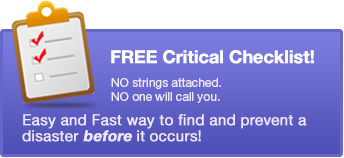Key Takeaways:
- Recognizing spam emails is essential to protect your privacy and sensitive information.
- Spotting common characteristics of spam emails helps in identification.
- Various tools and procedures can be implemented to filter spam effectively.
- Regular training on resisting hackers can play a vital role in protecting from spam emails.
Introduction
The growing menace of spam emails has left individuals and businesses grappling with security challenges. These unwanted emails not only clutter your inbox but also pose significant threats to your privacy and sensitive information. How to differentiate genuine emails from spam? This article delves into the characteristics, detection techniques, and methods to protect against spam emails.
Characteristics of Spam Emails
- Unfamiliar Sender: Spam emails often come from addresses that you don't recognize.
- Generic Greetings: They frequently use generic greetings like "Dear User" or "Dear Customer."
- Misspellings and Grammar Errors: These emails usually contain grammatical errors and misspellings.
- Suspicious Links or Attachments: Spam emails often contain suspicious links or attachments that can infect your computer with malware.
- Request for Personal Information: They may ask for personal information such as credit card numbers or passwords.
Learn more about how to identify these signs with this ultimate guide on security secrets.
Tools and Procedures for Detection
Utilize Email Filters
Most email providers offer spam filters that can catch most of these unwanted emails. Configure them properly for optimal protection.
Verify the Sender’s Email Address
Always check the sender's email address if you are suspicious. It might be from a domain that you don't recognize.
Utilize Spam Checker Tools
Various online tools can check if an email is spam. They analyze the content and give a spam score.
Regular Training
Regular training on recognizing and resisting hackers can be pivotal in safeguarding against spam. Here's where you can train your staff to resist hackers.
Methods to Protect Against Spam
- Use Email Security Software: Utilize email security software to filter out most of the spam.
- Don't Click on Suspicious Links: If an email looks suspicious, do not click on any links or download attachments.
- Regularly Update Your Software: Keep your operating system and security software up to date.
- Avoid Publicly Displaying Your Email Address: The more publicly your email is displayed, the more likely it is to be targeted.
- Implement Multi-Factor Authentication (MFA): MFA adds an additional layer of security. Learn more about how all businesses should adopt MFA now.
Additional Resources
Related Reading
For those who are interested in delving deeper into the subject, this blog post on phishing, the art of cybercrime, provides further insights into recognizing and protecting against fraudulent emails.
Final Thoughts
Recognizing and protecting against spam emails is not just about using tools and filters. It's about awareness, knowledge, and continuous vigilance. Regular training and staying updated with the latest trends in email security are essential. By following the guidelines and resources shared in this article, you can take control of your inbox and secure your privacy.
Visit InfoStream's cybersecurity services for a comprehensive solution to your spam-related concerns. Stay safe, stay informed!



